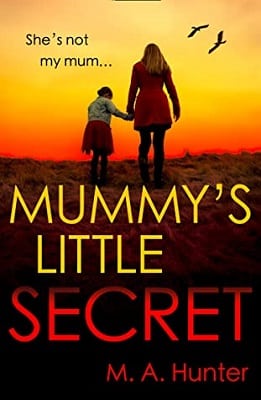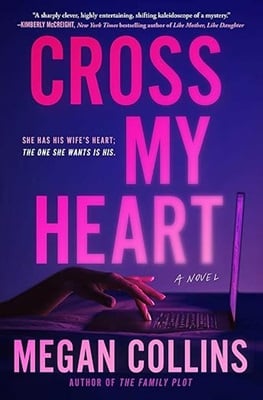Book Review
Mummy’s Little Secret
reviewed by Barbara Saffer
Jess – who lives in the London suburbs – has been wheelchair-bound for six months, since an epidural needle slipped and paralyzed her legs just before she gave birth to a stillborn son. Jess is still reeling from the double tragedy, but tries to keep life as normal as possible for her four-year-old daughter Grace.
Thus Jess is watching Grace frolic at the playground when a little girl grasps the arm of Jess’s wheelchair and nervously whispers “She’s not my mum.”
A moment later a fifty-something woman with a Scottish accent trots into view calling “Daisy? Daisy?” The woman apologizes to Jess for her daughter being a nuisance, and introduces herself as Morag. Grace and Daisy run off to play, the mothers start to chat, and they discover that Grace and Daisy will be starting school together next week.
Morag, apparently eager to help Daisy make friends, asks about arranging a playdate. She then says she’s parched and suggests they all go to a nearby refreshment stand for juice and cake. Jess, whose husband Charlie has been pushing her to get out more, reluctantly agrees.
However, Jess can’t forget Daisy’s four little words – “She’s not my mum” – and views Morag with deep suspicion. Morag is old to be Daisy’s mother; evades explaining why she, her husband Angus, and Daisy recently moved to London; and appears anxious. Moreover Daisy is quiet and subdued, almost as if she’s afraid to speak.
For Morag’s part, she’s uncomfortable with Jess’s questions and senses that Jess views her with mistrust. Worse yet, Jess keeps looking at Daisy askance, as if she senses something is wrong.
After this initial encounter, Jess and Morag meet repeatedly, either by design – when Morag invites Jess’s family to her home for a barbecue; or accidently – when the women are dropping their children off at school, shopping for groceries, or in a boutique shop. Jess becomes increasingly uneasy about Morag, does research online, and concludes Morag abducted Daisy. Jess confides in her husband Charlie, but Charlie – who’s often harried and working late – thinks Jess is just being paranoid.
Actually, Morag IS hiding something and trying to evade someone. Morag is uncomfortable with her repeated ‘accidental’ encounters with Jess and becomes convinced Jess has been hired to spy on her.
The tension between Jess and Morag escalates, there are further developments, and a homicide occurs.
The story switches back and forth between Before and Now, and is told in the alternating voices of Jess, Morag, and Detective Inspector Mike Ferry, who’s investigating the homicide.
In the before chapters, we see what led to the murder. In the now sections, DI Ferry is probing the crime with the Chief Super on his back to make an arrest. Ferry’s unit had a recent run-in with Professional Standards and barely escaped with their jobs. Now the boss wants things done fast and by the book. But Ferry is having difficulty making sense of the death, and working with his detective ex-girlfriend just makes things harder.
The story is cleverly constructed, and tension builds as Jess and Morag’s secrets are slowly revealed, and the details of the crime are unearthed bit by bit.
A positive aspect of the book is the depiction of Jess as a recent paraplegic who gets around on her own. Jess and Charlie can’t afford an electric wheelchair and Jess has to hand push her chair’s wheels to bring Daisy to school, do the shopping, take a train, bring Daisy to the playground, etc. Manipulating the wheelchair is painful and exhausting, and Jess’s determination to be a good wife and mother – and perhaps get back to her job as a journalist – is encouraging.
Part character study and part police procedural, this novel will intrigue mystery lovers and armchair detectives.
Thanks to Netgalley, M.A. Hunter, and One More Chapter for a copy of the book.
More Psychological Thrillers
Advertisement







